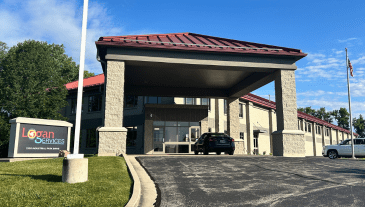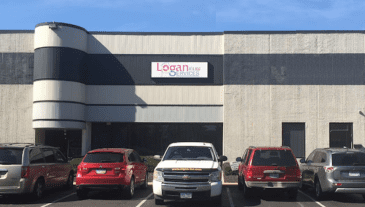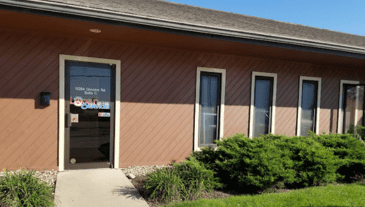Central air conditioning is a system that uses ductwork to distribute cooled air throughout a home, providing relief from heat in the summer months. “How much does it cost to install central air conditioning?” It is a complex question with varying results. Determining the cost to install central air can be complicated, as many factors impact the overall price tag, but typical costs can range from $7,000 to $14,000+ depending on the size of your home and the components chosen.
What is Central Air Conditioning?
Central air conditioning consists of three basic components – an outdoor central air conditioner unit, an indoor evaportator coil, and a furnace or air handler that functions to blow the air through a duct system to deliver conditioned air. The central unit sits outside the home, usually on a level pad next to the house. This unit houses the compressor, condenser coil, and other workings that cool air down. Inside ductwork connects to the central unit and air handler and has vents throughout the home to push out cold air when the system runs.
Central air is more effective than window units since it can cool an entire home evenly. The system also provides better air filtration and humidity control. There are extra initial costs associated with installing ductwork, but having one unified system can lead to higher efficiency and lower energy bills overall.
As you consider costs, keep in mind that options for the central unit and ductwork vary widely, impacting prices in a big way. Getting quotes tailored to your unique home is crucial.
Factors that Influence Central Air Conditioning Installation Costs
When considering the installation of a central air conditioning system in your home, several key factors influence the overall cost. Understanding these elements is crucial to comprehensively evaluating your investment.
Unit Size
The size of the central AC unit you need may slightly impact the installation costs. Depending on the type of system you are installing, the larger or more complex the unit is, the more time-intensive the installation process could become, and the potential equipment and labor costs could be impacted.
There are three main elements to central AC installation cost related to unit size, these include:
- Equipment Cost: Larger units can cost more than their smaller counterparts. This is because they possess greater cooling capacity and are technologically more complex.
- Labor Cost: Complex air conditioner replacement, system relocation, or even multi-zone units may require more manpower and time to install. As HVAC contractor rates can vary based on an hourly or daily rate, additional time needed may increase the cost.
- Additional Supplies: Larger units may require additional resources or enhancements to install central air effectively. This may include specialized mounting hardware or added ductwork.
Location of Your Home
Where your home is located can also affect the central air installation cost. For instance, if your home resides in an area with a hotter climate, you may likely need a larger and more powerful HVAC system to maintain comfort.
Similarly, the average cost of living and the relative cost of HVAC services in your area also factor into the final price. Areas with a higher cost of living typically have more expensive rates for air conditioning services.
- Geographical Area: The standard labor costs for HVAC work can vary greatly across the country. Typically, more populated areas with high labor costs can increase air conditioner installation costs.
- Regional Climate: Homes in warmer regions may call for a larger AC unit to maintain a comfortable interior temperature. A larger unit can increase both equipment and installation costs.
- Regional Regulations: Some regions require specific permits or have specific codes that must be met. Fulfilling these can sometimes necessitate additional costs.
HVAC Contractor Rates
Finally, the rate charged by your chosen HVAC contractor can significantly impact the central AC installation cost. Here, the dictating factors usually are the contractor’s experience level, the complexity of the job, and the length of time it will take to complete the installation.
Installation rates (whether they be factored by hour or by day) are typically charged by HVAC contractors and included in the price of your replacement quote. Remember that these rates can vary, and it may be something to consider if you are looking to get several quotes. Ensure you are choosing a company with a great reputation for customers satisfaction, and consider this when comparing prices.
- Contractor’s Experience: Experienced contractors may charge more for their service due to the expertise they bring to the job.
- Job Complexity: Complicated installations take more time and thus incur higher labor costs.
- Job Duration: Longer jobs naturally attract higher total labor costs.
Variability in AC Units
The variability in AC units, in terms of brand, size, efficiency, and special features, directly impacts the installation cost. Here are a few ways these variables influence the final price:
- Brand: Renowned air conditioning brands often come at a higher cost due to their reliability, high-quality components, warranty and customer support, and advanced technology.
- Size: Larger AC units typically come with a higher price tag, but it’s crucial to choose the right size based on your home’s cooling needs rather than price alone.
- Energy Efficiency: High-efficiency AC units can be more expensive upfront, but they can generate significant savings on energy bills in the long run.
- Special Features: Units with special features such as smart thermostat compatibility, variable speed compressors, or advanced filtration systems may also cost more.
Homeowners must invest time in evaluating these factors, considering their lifestyle, climate, and budget, to ensure they’re making the most cost-effective decision.
Cost Breakdown of a Central Air Installation
On average, homeowners pay between $5,000 and $12,000+ for the full installation of a new central air system. However, final costs depend heavily on existing infrastructure, home layout, the brand of the unit chosen, and air conditioner installer rates in your area. The total fees consist of:
Central Air Unit Cost – The condenser unit itself will be the most valuable part of the system and initial labor involved. Efficiency ratings, sizing, brand, and warranty specifics add to costs quickly.
Ductwork Cost – New ductwork installation can be priced by linear feet you are adding but varies dramatically based on home size, layout, and existing infrastructure. Modifications to existing ducts or plenums may only be a few hundred dollars. For a typical 2000 sq ft home, new ductwork installation alone can cost $4,000 to $8,000+, so always be mindful of how that can play into the cost of the project.
Thermostat & Component Costs – A programmable thermostat may cost $100 to $300, depending on smart home functionality. Other electrical costs, like wiring, breaker box modifications, permits, and disposal of old units, average $500 to $1,500+.
Impacts on the Total Central Air Installation Cost
Many homeowners want to know what the true average cost for a central air installation is. As shown above, the range is very broad. Prices ultimately come down to the specifics of your home and the options selected. Key cost factors include:
Home Size – Larger homes require larger AC units and more extensive ductwork, which scales up costs quickly. A two-stage AC unit and new duct installation for a 4,000 sq ft home may cost $12,000 to $15,000 or more, especially depending on if you require a furnace or air handler upgrade for system compatibility.
Zones – For homes with multiple levels or detached spaces like a guest house, separate temperature zones will be required, driving up expenses.
Ductwork Needs – New ductwork installation is far more expensive than modifying existing ducts—age and condition of current ducts impact costs.
AC Unit Efficiency – A higher Seasonal Energy Efficiency Rating (SEER) means increased upfront costs but long-term power savings. Standard units start around 14 SEER. High-efficiency units range from 18-20 SEER+.
AC Unit Staging – Two-stage central AC units with variable capacities for sizing to the home tend to increase the budget but provide better temperature balance.
Additional Costs – Other expenses like building permits, removal of old units, thermostat installs, and contractor minimum hourly rates can tack on fees quickly.
Brand & Warranty – Premier HVAC brands like Trane or Carrier offer longer warranties of up to 10 years but can come at a higher upfront cost than builder’s grade manufacturers.
How Energy Efficiency Affects the Costs
A primary consideration for any new HVAC system is efficiency rating, measured in SEER. Standard units start around 14 SEER, while high-efficiency models range from 18 to 20+ SEER. Purchasing a more efficient central air unit means higher upfront costs but much lower energy usage over time. Most HVAC experts recommend a unit with at least 16-18 SEER or greater. You’ll reap the rewards on monthly bills for years while benefiting the environment.
When getting quotes, have contractors break down SEER options so you can calculate long-term cost savings against initial fees. Be sure to factor in any tax credits and utility rebates in your area as well, as high-efficiency units can qualify for hundreds of dollars in incentives. Consider financing AC installation to make these purchases more affordable.
Importance of the HVAC Installer for Central AC Costs
An often overlooked cost factor lies with the HVAC contractor you select. The quality and expertise behind the installation play a massive role in your system’s lifespan and efficiency. Investing in experienced installers may cost more upfront but saves tremendous hassle and expense in the long term.
Warning signs of unqualified contractors include:
- Quotes substantially lower than competitors
- No licensing information is provided/available
- Vague about brands or options offered
- Poor communication and availability
Hallmarks of great HVAC pros are:
- Specific equipment quotes accounting for the product details of your installation
- Clean permitting record and licensing in good standing
- Responsive project management and communication
- Customizable options for brands and efficiency tiers
- Established local reputation with proven expertise
Taking time to research contractors pays dividends through greater system quality and reduced repair costs for years to come.
Financing the Installation of a New Central AC
Coming up with $7,000, $12,000, or more to install a new central air system may be challenging to finance all at once. That’s why exploring various payment arrangements can greatly relieve budgeting stresses. There are now more options than ever before to consider when financing your AC upgrade.
Many homeowners choose to use equity loans, home equity lines of credit (HELOCs), or cash-out mortgage refinancing to tap into available funds from their existing home value. The upside is interest rates are often lower compared to other financing options. The downside is increasing your overall debt obligations.
Another approach is spreading costs over time with one of many credit financing offers that HVAC companies provide. These agreements allow you to finance air conditioner replacement costs in monthly payments over a set duration, often stretched out multiple years. Things like 0% intro APR periods can minimize initial interest fees. Just be sure to understand the total borrowing costs in the long term and the resulting monthly payments before signing an installment plan.
Every homeowner’s financial situation is different. Weight the costs and benefits of any financing option against your budget and overall savings goals before moving forward. Be sure to take time to explore cost-effective financing for AC installation.
It’s important to remember that while the up-front cost might seem high, the long-term benefits and savings associated with installing a central air unit can make this investment worthwhile. Let’s look into the financial implications in more detail.
Savings in the Long Run By Installing a Central AC Unit
Seeing beyond the initial central AC installation cost, there is an opportunity for significant savings when you install central air. Over time, these savings can add up, ultimately justifying your investment.
- Energy Efficiency: Modern central air conditioning systems are designed for energy efficiency. They consume less power than older HVAC systems, contributing to lower electricity bills. With increased energy efficiency, there is an opportunity to cut energy costs substantially over time.
- Longevity: The durability of modern central AC units also results in financial savings. With regular maintenance, a central air conditioning system can serve you efficiently for 12 to 15+ years, reducing the frequent replacement costs associated with window AC units or builder’s grade systems, which may only operate effectively for 4-8 years.
- Resale Value: Installing a central AC system can boost your home’s resale value. When the time comes to sell, prospective buyers often look for homes with central air conditioning precisely because of the comfort it offers and the potential energy savings.
However, bear in mind that to realize these savings, regular maintenance of your central AC system is a must.
Additional Costs that May Arise After Installing Central AC
While installing a central air unit can lead to substantial savings, it’s crucial to be aware of some additional costs that may arise post-installation.
- Maintenance: Just like any other appliance, your central AC unit will need routine maintenance to keep it running efficiently.
- Repairs: Although it’s less frequent with regular maintenance, occasional repairs are inevitable. These costs vary depending on the complexity of the issue and the HVAC contractor rates.
- Utility Bill: Operating a central AC system will impact your monthly utility bills. However, the more energy-efficient your model, the less it will cost to run it monthly.
The Logan Difference
At Logan Services, we’re a family-owned company that has been serving our community since 1969. We know HVAC systems can be complicated, which is why we go the extra mile to ensure every customer has an exceptional experience. Here are some of the key things that set Logan apart:
Unparalleled Training and Expertise
Our installers complete an intensive training program, so they are true experts in HVAC systems. This means every job is done efficiently, properly, and to the highest standards. Our experienced install managers also oversee each job, bringing their wealth of knowledge to ensure everything goes smoothly.
Communication and Walkthroughs
We believe communication is critical. Our team keeps customers updated from the inspection to job completion. Once the installation is done, we walk customers through the new HVAC system so they know how to operate and maintain it properly. Our installers can answer any question before they leave.
Accountability at Every Step
Logan techs must complete a 30-point checklist for every install, getting sign-off from managers to confirm all work is done to specification. We also help customers validate warranties and paperwork to eliminate hassles down the road.
Caring Commitment
As a local family-owned company, we care about our community and building lasting relationships. We make sure we have all the necessary parts ahead of appointments to prevent delays. Our priority is keeping customers comfortable.
At Logan, our goal is to exceed expectations with best-in-class expertise, communication, and accountability. Contact us today to experience the Logan difference!
Frequently Asked Questions (FAQs)
How much does it cost to install central air in an existing home?
For an existing home that needs full central air installation, including a new furnace or air handler, the average cost ranges from $8,000 to $16,000+ in total. Needing ductwork or electrical additions will add to that cost, so it’s always recommended to get estimates from local, reputable HVAC contractors to get an accurate figure.
How much is it to install central AC in a 1000 sq ft house?
In a 1,000-square-foot house that only needs an AC only, central air installation averages around $5,000-$8,000 in total and depends on the brand, size, and efficiency rating of the equipment. This includes the unit, minimal duct alterations, basic thermostats, permits, labor, etc. If needing an indoor unit (furnace or air handler) for system compatibility, expect for that range to potentially double.
What size central air conditioner do I need?
You’ll need an HVAC pro to calculate the optimal size, rated in tons, based on home layout, insulation, projected use per room, and more. Rules of thumb are 1 ton per ~500 sq ft for single-story homes, increased for multiple levels. Oversizing reduces efficiency, so it’s vital to get your system sized properly.
Is it cheaper to replace or repair the central AC?
If your current central air unit is over ten years old and losing efficiency with frequent repairs needed, replacement is likely the better investment to save on energy costs in the long term. Compare repair estimates to replacement quotes.




















